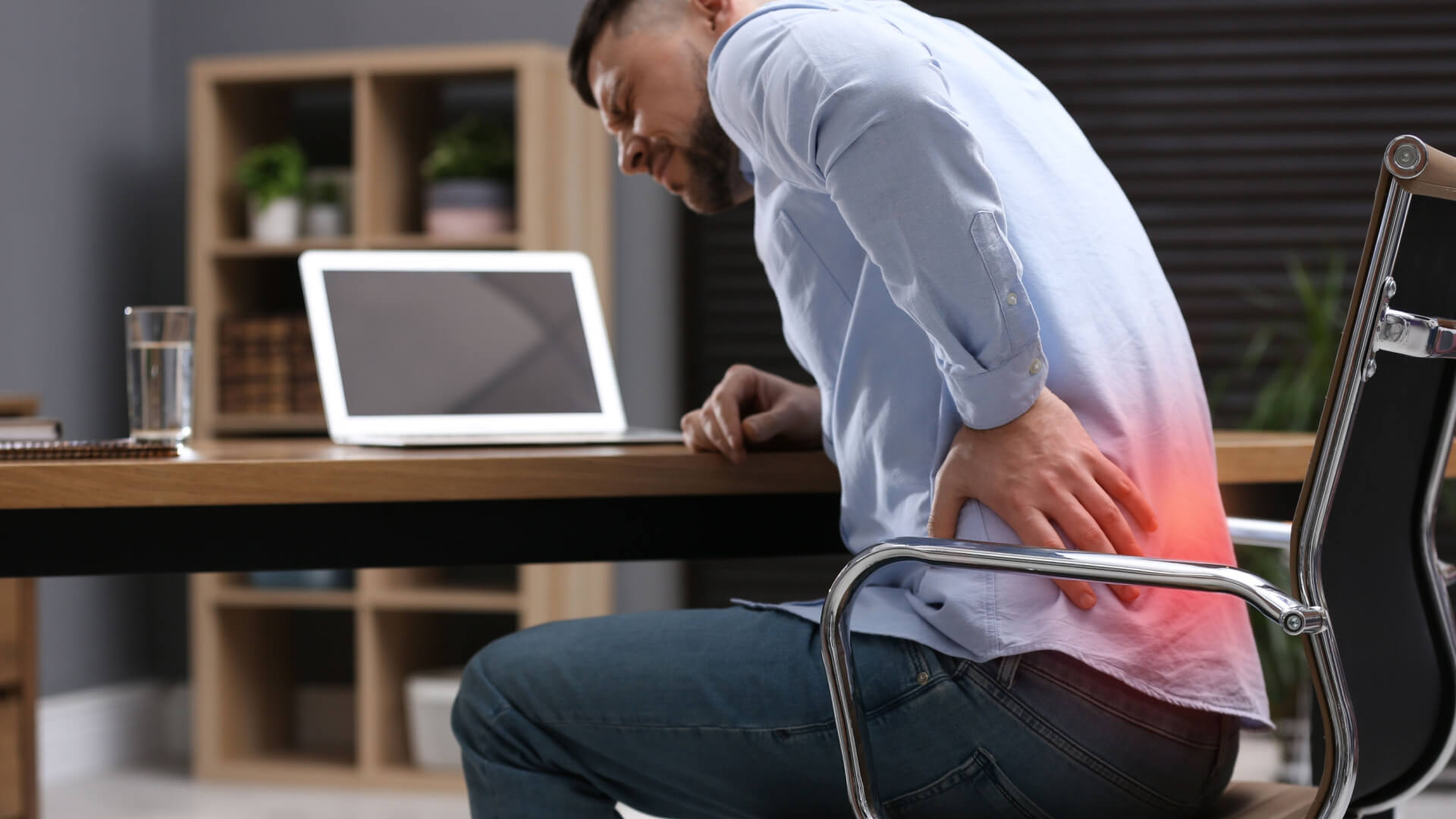Straighten Up for Better Health
People have always been told to sit up straight, stand up straight, keep their backs straight, not hunch over, and more. We’ve been told this for good reason because poor posture can lead to all kinds of problems and health conditions.
Today, when we find ourselves working at computers more than ever, with over 18.5 million people working some form of office job, poor posture is even harder to avoid. Many people are at risk of developing health issues because of poor posture.
The impact of poor posture on spinal health is great, potentially affecting everything from our breathing to our mood. Illinois Back Institute will explore the various conditions caused by poor posture, helping you understand the importance of maintaining good posture for overall health.
Understanding Poor Posture and Posture Pain
Poor posture refers to any position that puts undue strain on the body when standing, sitting, or lying down. Common causes include:
- Sitting hunched over for prolonged periods
- Standing hunched over for prolonged periods
- Lying down on your stomach
- Sleeping without proper support
People commonly develop poor posture by:
- Sitting with minimal movement
- Using mobile devices for extended periods
- Not adjusting workstations to ergonomic standards
- Even seemingly benign habits, like carrying a heavy bag on one shoulder, can contribute to poor posture over time
Poor Posture Effects on Overall Health
Poor posture doesn’t just cause neck and back pain—it can have a ripple effect on your overall health.
- When you slouch, your muscles and ligaments strain to keep you balanced, leading to fatigue and discomfort.
- Poor posture can also hinder your breathing by compressing your lungs and making it harder to take deep breaths. This, in turn, affects oxygen flow, potentially impairing cognitive function and energy levels.
- Over time, chronic poor posture can contribute to more severe health issues, such as digestive problems, cardiovascular strain, and even mood disorders.
3 Posture-Related Conditions
Kyphosis
Kyphosis is a condition where the afflicted have an excessive outward curvature of their spine. This can result in a hunched-back early in life. It often arises from poor posture, particularly when slouching becomes a habit.
While some degree of curvature is normal, kyphosis occurs when the curve exceeds 50 degrees. A medical examination of your spine can identify the curve of your spine.
Relationship Between Kyphosis and Poor Posture
Prolonged poor posture, especially during adolescence when bones are still growing, can lead to structural changes in your spine. This makes kyphosis a common condition among people who spend long hours bent over desks or engaging in other activities that promote slouching.
Symptoms and Potential Treatments
Symptoms of kyphosis include:
- Visible hunching
- Back pain
- Stiffness
- Difficulty breathing in severe cases
Treatment options vary based on severity. Mild cases may benefit from physical therapy and exercises designed to strengthen the back muscles and improve flexibility. Severe cases might require more extensive treatment. Schedule a consultation with Illinois Back Institute to discuss options.
Scoliosis
Scoliosis is a condition where the spine curves sideways, rather than outward. This can form an “S” or “C” shape along your spine. It typically develops during a growth spurt just before puberty, but adults can also be affected due to degenerative spinal conditions.
How Scoliosis is Linked to Posture
While scoliosis has a variety of causes, poor posture can exacerbate the condition. Remaining in asymmetrical positions for long periods can cause muscular imbalances, which can contribute to an abnormal curvature of your spine.
Signs, Symptoms, and Management Options
Signs of scoliosis include:
- Uneven shoulders
- A prominent rib cage
- One hip higher than the other
- Mild discomfort to severe pain and reduced mobility
Management options include wearing a brace to prevent further curvature, physical therapy to strengthen supporting muscles, and in severe cases, surgery to correct the spinal alignment.
Lordosis
Lordosis, also known as swayback, occurs when the spine has an excessive inward curve, which is the opposite of Kyphosis. This means that you will typically feel it affects your lower back.
This condition can be caused by a variety of factors aside from poor posture, including obesity and weakened abdominal muscles.
Pregnant women are also at risk due to the additional weight altering their center of gravity, which can lead to a more pronounced curvature in the lower spine.
How Poor Posture Contributes to Lordosis
Chronic poor posture, such as extended periods of sitting with a slouched or forward-leaning stance, can exacerbate the natural curve of the spine. Over time, the muscles and ligaments in the lower back become overstretched and weakened, allowing the pelvis to tilt forward and increase the lumbar curve.
This not only places undue stress on the lower back but can also cause an imbalance in muscle function and skeletal alignment.
Symptoms and Treatment Options
People with lordosis may experience symptoms such as:
- Lower back pain
- Muscle spasms
- A noticeable arch in the lower back
- Mobility issues in severe cases
- Nerve issues in severe cases
Contact the Illinois Back Institute For More Information About Treating Your Poor Posture Condition
Maintaining good posture is crucial for your spinal health and overall well-being. Poor posture can lead to a range of conditions, including kyphosis, scoliosis, and lordosis. They can cause significant discomfort and affect your quality of life.
By being mindful of your posture and making small, consistent changes in your daily habits, you can prevent these conditions and enjoy a healthier, more comfortable life. If you’re experiencing persistent pain or difficulty maintaining good posture, seek professional advice to address any underlying issues.
For those looking for personalized advice on improving posture and spinal health, our team of experts is here to help. Contact us today to schedule a consultation.


